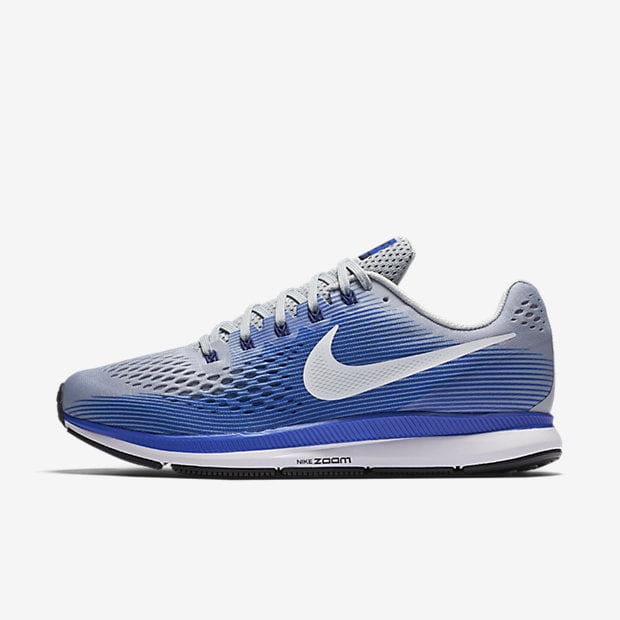

Identical to the Pegasus 33, Nike continues with its raised hexagonal pattern on the rubber outsole that provides durability and traction, accompanied by a "rubber strip" on the lateral side to aid in the heel to toe transition. the presence of the Air Zoom unit) but that really didn’t matter, I just thought that was interesting. I also could tell that there was a difference in certain areas of the midsole, (i.e. Oh, see the rocks and dirt in the picture? We’ll get to that later… I like the fact that there is some room for the heel to splay towards the ground as you land, adding towards the cushioning comfort. It is encased with Cushlon Foam, which is soft and provides good cushioning. Same as the Pegasus 33, it carries 2 Zoom Air units, one in the forefoot and one at the heel area to help give a springy responsive feel to the shoe when running. I felt secure running in the shoes throughout its lifespan with no problems of heel slippage.

The heel cup has sort of a fused overlay that adds stability to the shoe, as it is stiff. This is an edge that I feel many Nike shoes have over many competitors. It runs down on both sides of the shoe and acts as a tie-down to the shoe. It is coupled with the signature Flywire technology that tightens the whole midfoot when pulled, increasing its lockdown capabilities.

Nike has opted for flat laces this year over the round ones used in the Pegasus 33, which lessens the likelihood of coming undone (presumably). The tongue seems fairly secure when laced up and I did not have any issues with rubbing or sliding, unlike many shoes I’ve tried in the past. It is not as breathable as Flyknit but for the price and practicality, FlyMesh does the job well enough. You just feel the breeze in your feet, preventing heat build-up on longer runs. Thanks to its design which features numerous holes in the upper, the new material provided extra comfort during a run on a hot and sunny day. The Nike Air Zoom Pegasus 34 uses a new FlyMesh upper which has improved ventilation.


 0 kommentar(er)
0 kommentar(er)
